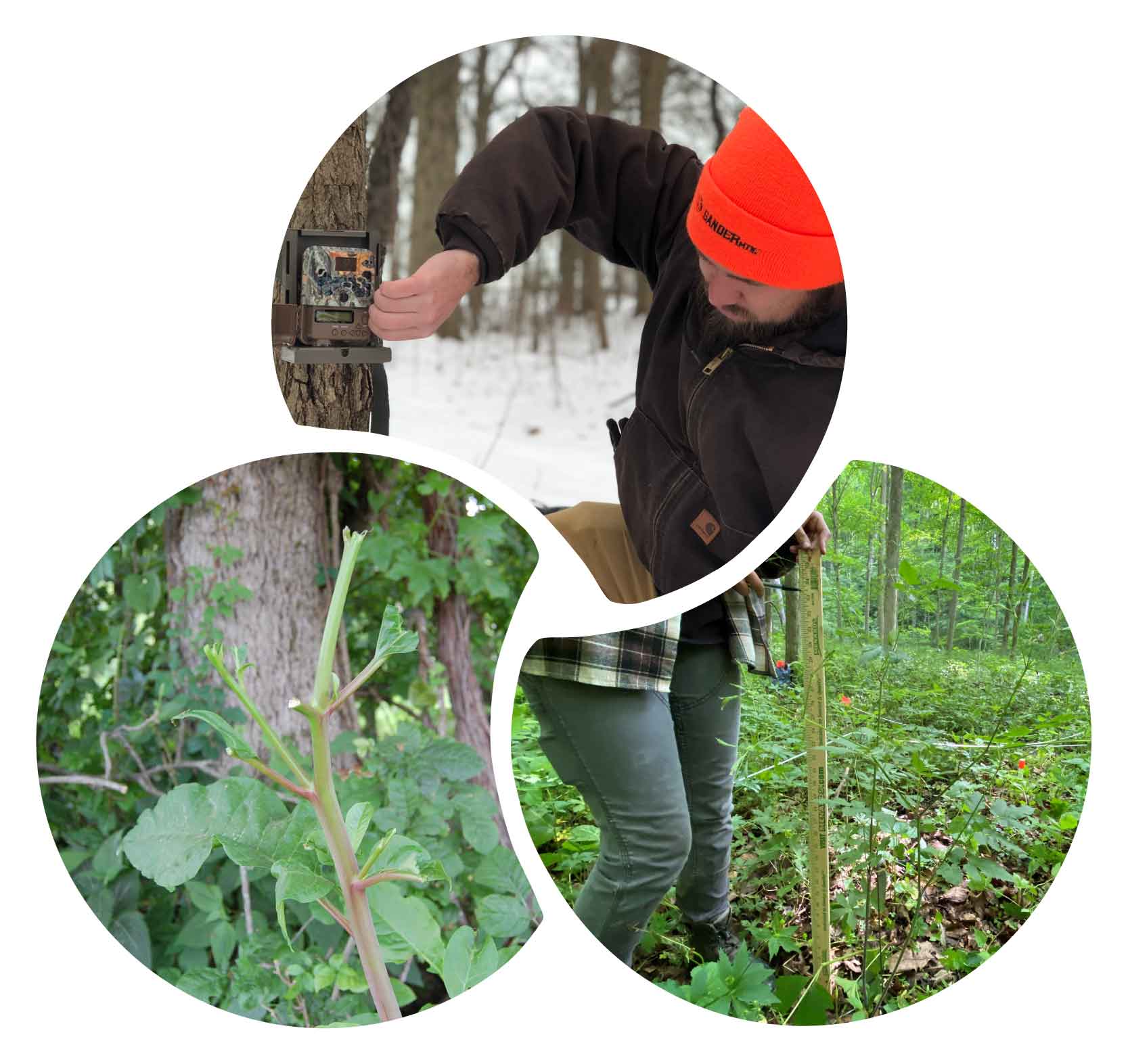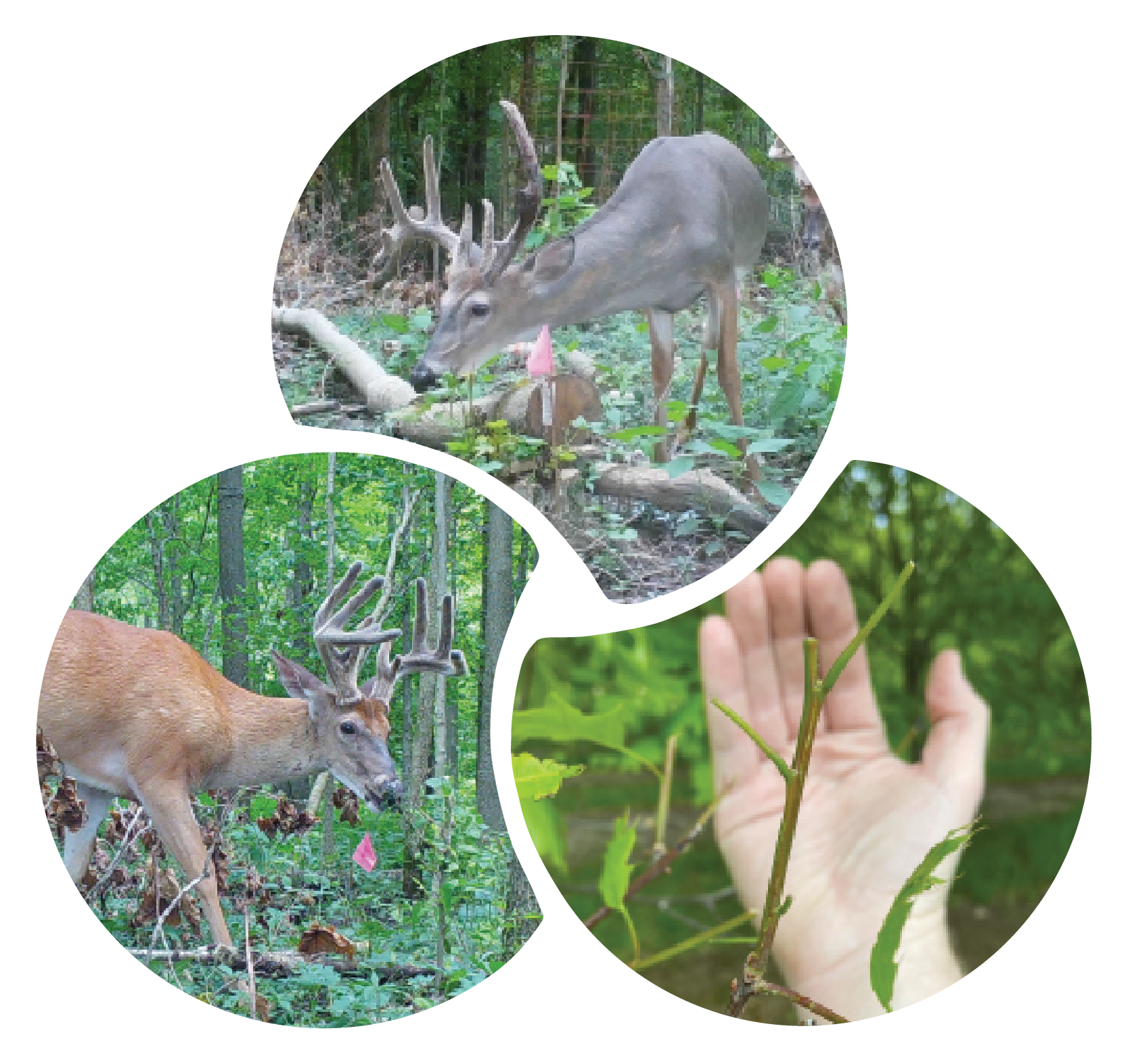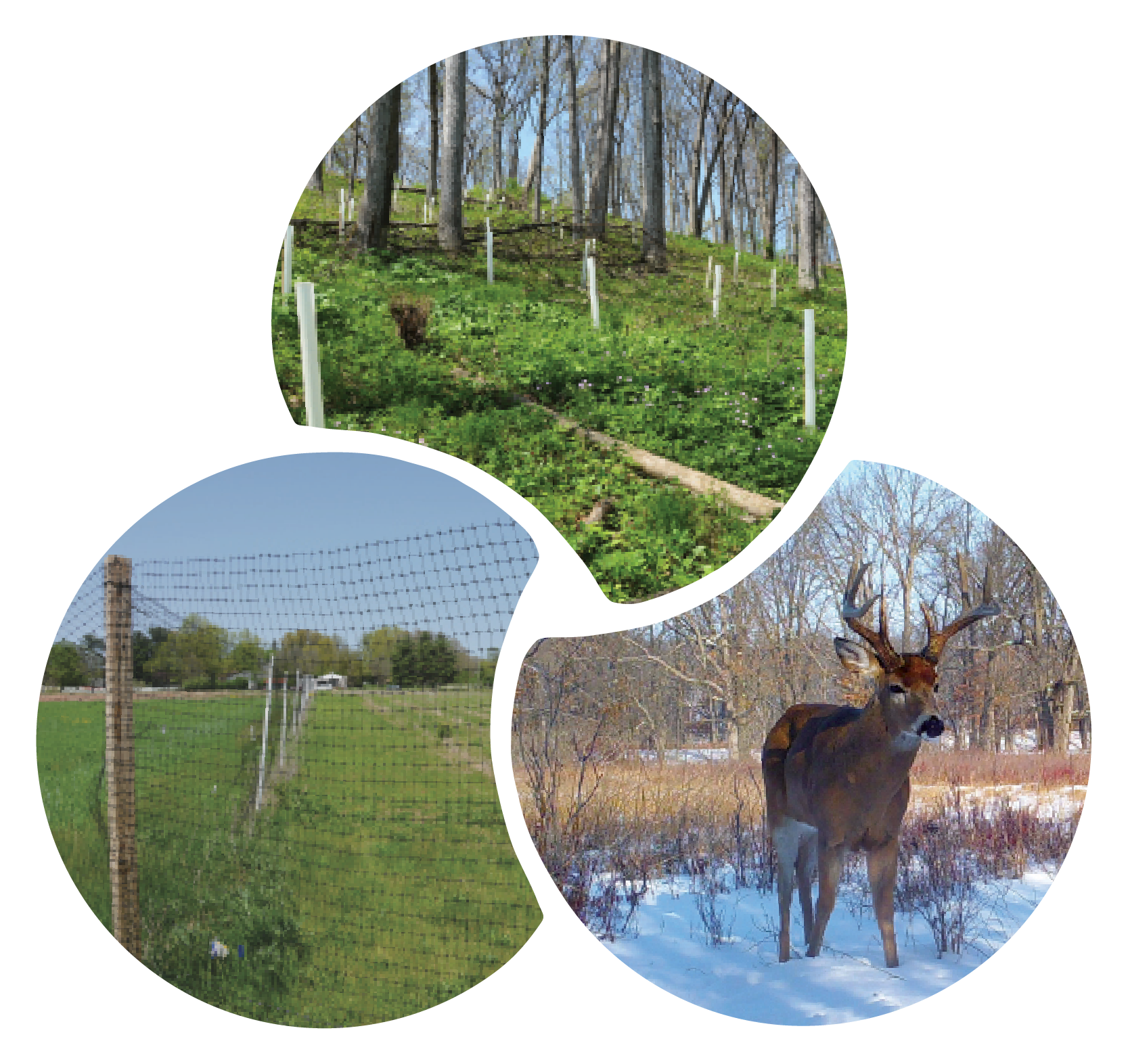
White-Tailed Deer Impacts on Indiana Woodlands
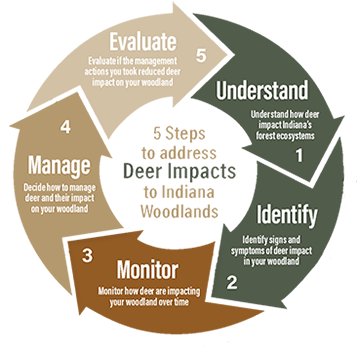 White-tailed deer are an important part of our Hoosier natural areas and a true conservation success story. Once extirpated from Indiana, deer now thrive in all 92 counties.
White-tailed deer are an important part of our Hoosier natural areas and a true conservation success story. Once extirpated from Indiana, deer now thrive in all 92 counties.
Deer can significantly impact the make-up of plants in our natural areas through the plants they eat (referred to as browsing). When the number of deer on the landscape is in balance with the available habitat and deer browsing is at a low intensity, deer can positively impact our forests’ plant diversity. When deer are overabundant, their browsing can impact forests in a variety of negative ways.
Explore this website and the resources within the Deer Impact Toolbox to discover the steps landowners and land managers can take to understand, monitoring, and manage deer impacts to Indiana’s forests.
How Deer Impact Forests
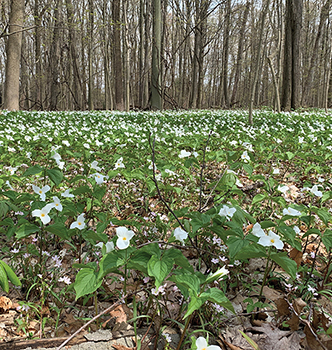 When deer have little impact on your woodlands, you often see a high diversity of plants. An abundance of preferred species like trillium (picture) can also be a sign of low deer impact.
When deer have little impact on your woodlands, you often see a high diversity of plants. An abundance of preferred species like trillium (picture) can also be a sign of low deer impact.
(Photo: Matt Beatty)
 When sprouts of preferred species are“hedged” or kept short by deer browse and browse on less preferred species is noticeable, then deer impact may be moderate.
When sprouts of preferred species are“hedged” or kept short by deer browse and browse on less preferred species is noticeable, then deer impact may be moderate.
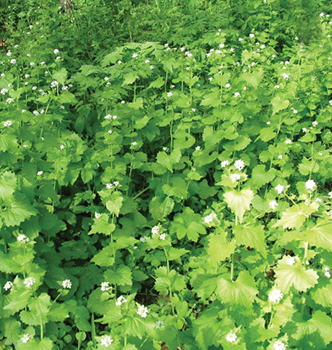 If invasive species like Japanese stiltgrass and garlic mustard are common in your woodland, it may be a sign that deer are overbrowsing native plants.
If invasive species like Japanese stiltgrass and garlic mustard are common in your woodland, it may be a sign that deer are overbrowsing native plants.
 Woodlands that have limited understories – or understories with only a few species of plants – can be a sign of severe deer impacts.
Woodlands that have limited understories – or understories with only a few species of plants – can be a sign of severe deer impacts.
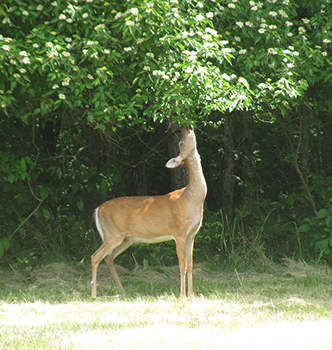 Browse lines indicate a severe deer problem and appear when deer browse all plants within their reach (<6 feet).
Browse lines indicate a severe deer problem and appear when deer browse all plants within their reach (<6 feet).
Check out the resources available
Check out these deer resources:
- How to Build a Plastic Mesh Deer Exclusion Fence, free downloadable publication, The Education Store.
- Diagnosing and Controlling Wildlife Damage, free downloadable publication, The Education Store.
- Woodland Stewardship for Landowners: Managing Deer Damage to Young Trees, video, The Education Store.
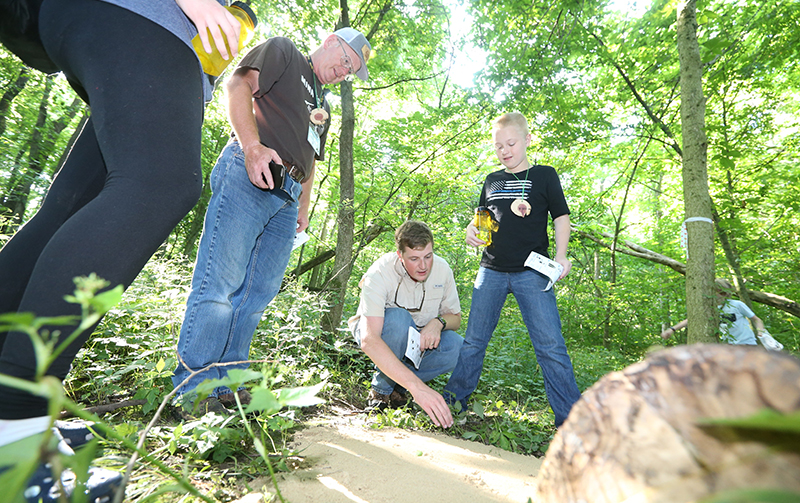
Have a question?
Contact Jarred Brooke, wildlife extension specialist, 765.494.8459
jmbrooke@purdue.edu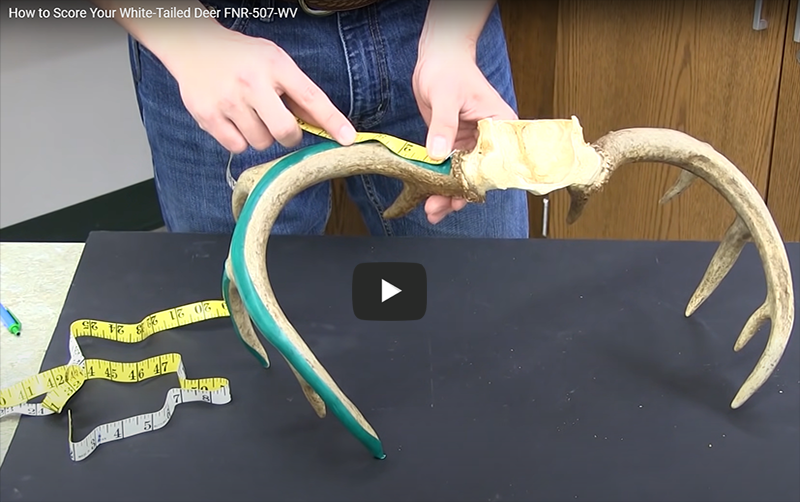
Deer resources
Check out more deer publications and videos
Purdue Extension - Forestry & Natural Resources
